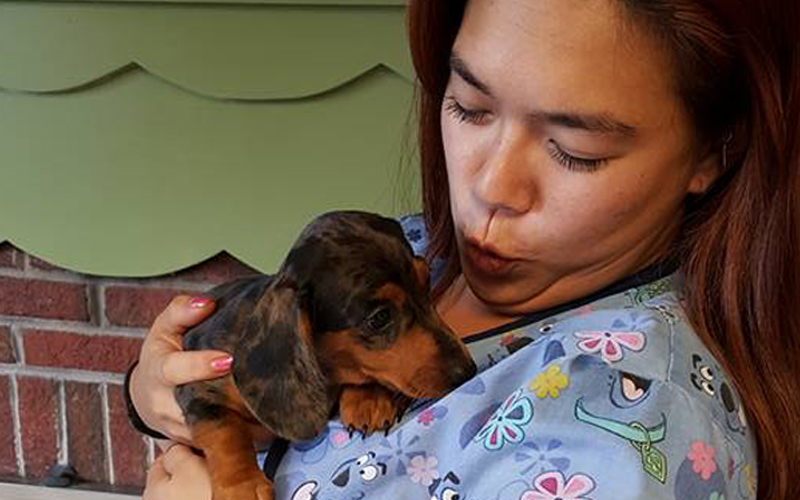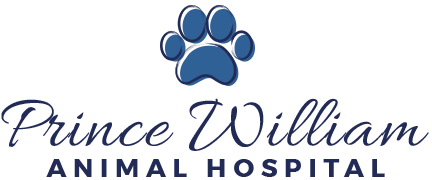In-House Diagnostics for Dogs and Cats in Manassas, VA
Making sure your pet receives the very best care at our hospital means using state-of-the-art diagnostics to more thoroughly evaluate their health. The physical exam limits us to what we can see on the outside, but with our in-house laboratory and digital X-ray equipment, we can also determine what’s happening on the inside. These tools help us bring to light issues that are a) subtle and hard to detect, and b) being concealed by pets who, by nature, try not to show signs of illness, pain, and weakness. Fortunately, we have the ability to learn more about your pet’s condition and offer better-informed treatment plans to improve their health.

Why are Laboratory Tests Important?
Whether your pet is healthy or under the weather, checking blood and stool samples can give us important information about their condition. The testing we recommend for your pet depends on what we’re looking for. Are we screening for parasites? Evaluating their blood? Checking their liver and kidney function? Lab testing has many uses and in addition to using our in-house lab for same-day test results, we also work with an external lab for more complex and comprehensive testing, which usually takes about 24 hours to process.
Laboratory tests give us insight into your pet’s internal systems and functions, and can help us detect issues that might otherwise be overlooked. It’s important that we leave no stone unturned regarding your pet’s health and treatment.
Achieving Better Visuals with Digital X-ray
Digital X-ray allows for better diagnosing thanks to the enhanced clarity of the images it produces. In addition, digital X-ray procedures go much more quickly—no need to worry about film developing fluid, placing film in trays in pitch darkness, or having to reposition our patients for a better picture. X-ray is a reliable tool for diagnosing broken bones, foreign bodies, heart and lung issues, and, occasionally, tumors. And if necessary, we can send your pet’s X-ray image files out to specialists for additional review and a more complete and accurate diagnosis.
Understanding What’s Going on With Your Best Friend… From the Inside, Out
Our practice stays up to date on the latest advancements in technology that veterinary medicine has to offer. Our Abdominal Ultrasound and Echocardiogram equipment allows us to further explore issues your pet may be having. Be sure to keep reading for detailed information on this advanced technology!

We accept referrals for both abdominal and echo ultrasounds!
To schedule an ultrasound for your pet, give us a call at (703) 361-5223 or click below to request an appointment online.
Ultrasound allows us to look in very fine detail at soft tissue structures that are not visible on X-rays in order to thoroughly evaluate each abdominal organ and identify very small abnormalities.
Because there is no radiation used, there are no risks to your pet from the ultrasound itself. Many pets need at least light sedation and are calmer with it. The risk of sedation is minimal
Ultrasound tells us if a nodule or mass is there but doesn’t tell us specifically what it is. Fine needle aspiration involves using ultrasound to guide a needle into the nodule or abnormal organ. The sample is then sent to a pathologist for analysis.
2-3% of patients undergoing a FNA will experience mild bleeding and will require monitoring at your veterinarian after the procedure to ensure that the bleeding stops. FNA samples do not always provide a diagnosis, and sometimes a surgical biopsy is needed.
An echocardiogram is an ultrasound of the heart. With an x-ray of the heart, we can just see the overall size of the heart. With an echocardiogram, we see how big each chamber is, what the structures of the heart look like, how well it is functioning, and can evaluate the flow of blood through the heart. With this information, we can tell if an animal has mild heart disease, or if medication might be needed to keep the heart functioning well and improve quality of life. It also tells us if there is an increased risk for anesthesia and how to manage that.
It is a very safe procedure that takes about 15-30 minutes. A small area of hair will be clipped, and the pet lies on it side on a table for the procedure. If the pet is moving a lot or anxious, a mild sedative might be needed to allow for patient comfort and accurate measurement.
